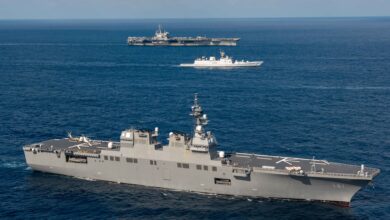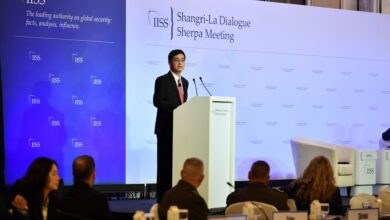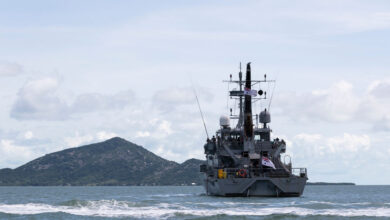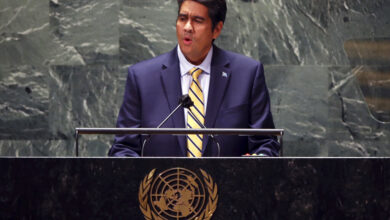U.S.-Japan alliance increasingly strengthened since end of WWII

The United States and Japan share common goals in the Indo-Pacific region such as freedom of navigation, economic prosperity within the rules of international law and deterrence of aggression from nations such as the People’s Republic of China, Russia and North Korea, as well as from terrorist organizations.
As an important ally, Japan increasingly has participated with the U.S. and other partners in bilateral and multilateral military exercises and operations, especially since the fall of the Soviet Union. For example:
- In the early 1990s, Japan participated in a United Nations peacekeeping operation in Cambodia.
- In November 2001, Japan dispatched its Maritime Self-Defense Force to the Indian Ocean to provide logistical support for U.S. military operations in Afghanistan, marking Japan’s first overseas military action during a combat operation.
- In 2003, Japan sent forces to aid in Iraq’s postwar reconstruction efforts.
- Since 2007, Japan has participated in Exercise Malabar with the U.S. and India.
- The U.S. and Japanese militaries worked effectively together to respond to a March 2011 earthquake and tsunami, which devastated large areas of the main Japanese island of Honshu.
- In October 2018, the new Japanese Mobile Amphibious Forces held joint exercises with U.S. Marines in the Japanese prefecture of Kagoshima to work out actions in defense of remote territories.
In recent years, Japan has donated dozens of used and new patrol boats to coast guards in the region, complementing similar U.S. efforts toward building partner capacity and capabilities, such as the Indo-Pacific Maritime Security Initiative, foreign military financing, international military education and training, and the Asia Reassurance Initiative Act.
The depth of the U.S. commitment to the U.S.-Japan alliance is evidenced by the nearly 55,000 U.S. military personnel stationed in Japan and the thousands of U.S. Defense Department civilians and family members who live and work alongside them. (Pictured: The U.S. Marine Corps hosts the Fuji Friendship Festival at Combined Arms Training Center Camp Fuji, Japan.)
The U.S. has also deployed its most capable and advanced military assets to Japan, including the USS Ronald Reagan carrier strike group, two missile defense radar sites and the F-35 joint strike fighter.
Japan acquires more than 90% of its defense imports from the U.S. and has expressed growing interest in interoperable technology with advanced capabilities.
The U.S. has approved some U.S. $20 billion in foreign military sales to Japan, including Japan’s purchase of F-35s, E-2D airborne early warning aircraft, the KC-46 refueling tanker, the Global Hawk unmanned aerial system and MV-22 tilt-rotor aircraft, as well as missiles such as the AIM-120 advanced medium-range air-to-air missile, and UGM-84 Harpoon and SM-3 Block IIA ballistic missile defense interceptor missiles.
The Japanese government provides nearly U.S. $2 billion per year to offset the cost of stationing U.S. forces in 85 facilities across Japan.
After the official surrender of Japan to the Allies on September 2, 1945, the U.S. began the process of helping to bring Japan back into the international community by strengthening military, political and economic ties, much as it was doing with former foes Italy and Germany.
The American military occupation of Japan lasted from 1945 to 1951. During that time, Japan categorically rejected militarism, embraced democracy, eagerly sought economic prosperity and began to embrace the U.S. as an ally and equal partner.
The U.S. still occupied several island chains in the Western Pacific that used to be part of Japan. That occupation ended when the U.S. returned the Bonin Islands, including Iwo Jima, to Japan in 1968 and Okinawa and other Ryukyu islands in 1972.
A series of treaties followed the occupation of mainland Japan. First was the San Francisco Peace Treaty, signed September 8, 1951, that went into effect April 28, 1952. It marked the end of the Allied occupation of the Japanese mainland. Japan’s first security agreements with the U.S. and with nations other than the Soviet Union also were signed then.




